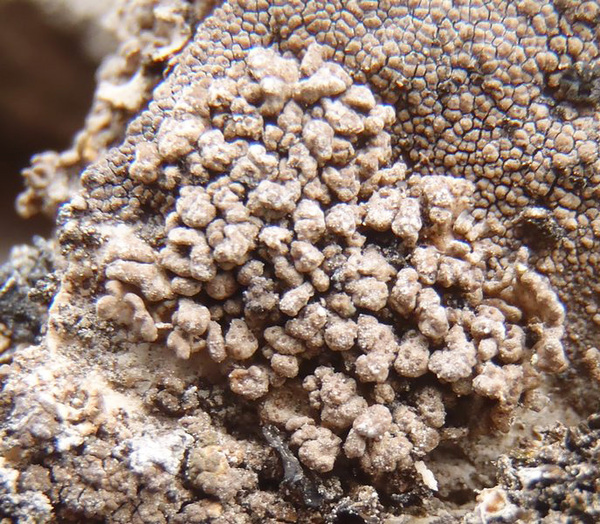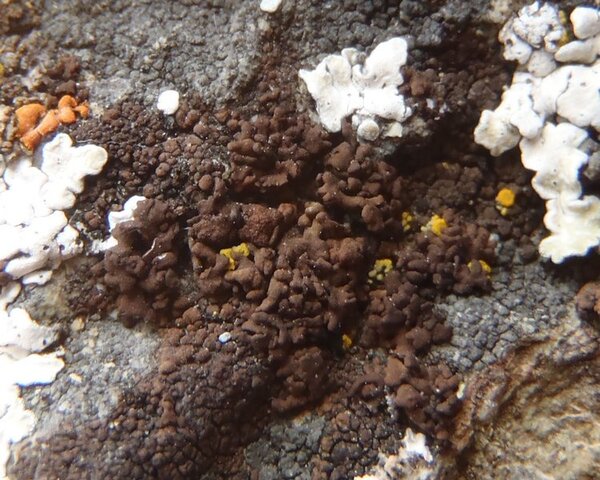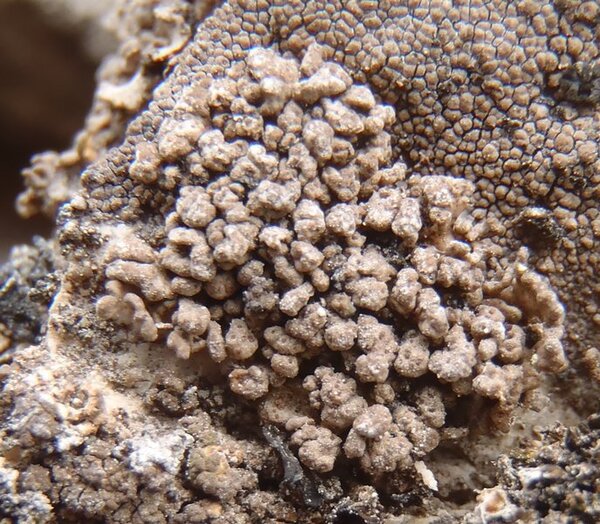Staurothele pulvinata (Th. Fr.) Heiðm.
in Heiðmarsson & al., Phytotaxa, 306, 1: 45, 2017.. Basionym: Endocarpon pulvinatum Th. Fr. - N. Acta Reg. Soc. Sci. Upsal., ser. 3, 3: 357, 1861.
Synonyms:
Distribution: N - TAA, Lomb, Piem (Isocrono & al. 2004), VA (Piervittori & Isocrono 1999), Lig.
Description: Thallus subsquamulose-subfruticose, heteromerous, forming up to 2 cm wide cushions consisting of densely crowded, ascending to erect, subcylindrical to slightly flattened, up to 7 mm long and 0.15-0.3(-0.5) mm thick, tortuose-nodulose, repeatedly dichotomously branched elements, several of which arise from a common holdfast. Upper surface medium to dark brown, dull; lower surface paler. Upper cortex pseudoparenchymatous, 20-30 µm thick, of roundish-angular cells, without an epinecral layer; medulla white, loose; lower cortex paraplectenchymatous, 25-45 µm thick, colourless to pale brown, of rather thick-walled, conglutinated, angular cells arranged in vertical columns. Perithecia immersed, causing swellings on the underside, broadly pyriform, without involucrellum, up to 0.3 mm across. Exciple colourless to very pale brown in upper part; hymenium colourless, filled with al ellipsoid-oblong to mostly elongate, hymenial algae measuring 4-12 x 2-3.5(-4) µm (up to 12 µm long when in division); periphyses 50-80 µm long, paraphyses absent. Asci 2-spored, clavate to cylindrical-clavate, bitunicate with a fissitunicate dehiscence, thin-walled, the wall non-amyloid. Ascospores strongly muriform, at first hyaline but turning dark brown with age, 35-65 x 13-30 µm (the upper spore larger than the lower one). Photobiont chlorococcoid (Stichococcus), present in both thallus and hymenium. Spot tests: cortex and medulla K-, C-, KC-, P-, UV-. Chemistry: without lichen substances.
Note: on calciferous soil, sometimes on calcareous rocks, with optimum near and above treeline. All Italian records require re-confirmation.
Growth form: Squamulose
Substrata: soil, terricolous mosses, and plant debris
Photobiont: green algae other than Trentepohlia
Reproductive strategy: mainly sexual
Commonnes-rarity: (info)
Alpine belt: rather rare
Subalpine belt: rare
Oromediterranean belt: absent
Montane belt: very rare
Submediterranean belt: absent
Padanian area: absent
Humid submediterranean belt: absent
Humid mediterranean belt: absent
Dry mediterranean belt: absent

Predictive model


Curtis Randall Björk CC BY-SA 4.0
Idaho, Lemhi County, near the lower end of Railroad Canyon, USA, On dolomite cliff, narrow canyon at lower tree-line


Curtis Randall Björk - CC BY-SA 4.0
Idaho, Lemhi County, near the lower end of Railroad Canyon, USA, On dolomite cliff, narrow canyon at lower tree-line


Curtis Randall Björk - CC BY-SA 4.0
Idaho, Lemhi County, near the lower end of Railroad Canyon, USA, On dolomite cliff, narrow canyon at lower tree-line
Growth form: Squamulose
Substrata: soil, terricolous mosses, and plant debris
Photobiont: green algae other than Trentepohlia
Reproductive strategy: mainly sexual
Commonnes-rarity: (info)
Alpine belt: rather rare
Subalpine belt: rare
Oromediterranean belt: absent
Montane belt: very rare
Submediterranean belt: absent
Padanian area: absent
Humid submediterranean belt: absent
Humid mediterranean belt: absent
Dry mediterranean belt: absent

Predictive model


Curtis Randall Björk CC BY-SA 4.0
Idaho, Lemhi County, near the lower end of Railroad Canyon, USA, On dolomite cliff, narrow canyon at lower tree-line


Curtis Randall Björk - CC BY-SA 4.0
Idaho, Lemhi County, near the lower end of Railroad Canyon, USA, On dolomite cliff, narrow canyon at lower tree-line


 INDEX FUNGORUM
INDEX FUNGORUM
 GBIF
GBIF
 DOLICHENS
DOLICHENS



